
Gradually about all . . .

Some properties of chemical dust plasma for physical modelling of the ball lightning
The objects arising at a relaxation of erosive electric discharge products in an atmosphere.
The important stage of understanding of ball and bead lightning's nature is connected to studying of the autonomous luminous objects being created with the help of an electric erosive discharge in the laboratory atmosphere [1-6]. Introduction of an aerosol into these discharges is provided with erosion of electrodes (metal, coal, electrolitic) or dielectric, by burning-through of wire or conductive covering on a dielectric plate etc. Such objects are capable to have the correct spherical form at the size about units - tens centimeters and lifetime ~ 0.1 - 1 s by the end of which their luminosity considerably falls and the form loses stability. The shape relaxation of objects emerging in an atmosphere is frequently accompanied by transformation of a sphere to torus (fig. 1).

Fig. 1. Transformation of the fireball created at the discharge between copper wire electrodes.
The energy density in them is rather insignificant - about the tenth shares of a joule in cubic centimeter, they is not blowing up and is not burning-through metal foil.
Feature of the electric discharge bearing them (fig. 2) is the presence in it of area of the volumetric heterogeneous discharge in gas (an atmosphere, water vapor) containing the active additive as a small amount of enough fine aerosol (vapor) of a refractory material - conductor or dielectric.
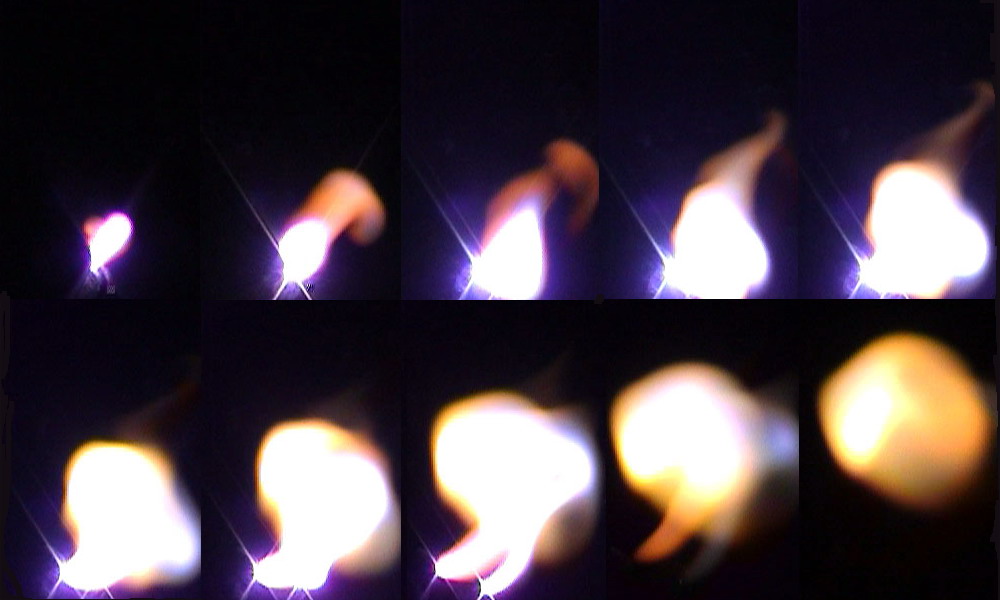
Fig. 2. Accumulation metastable substance and formation of a fireball at the discharge with coal electrodes .
Energy accrued in such system in case of the laboratory unsteady discharge has a chemical nature and at use of molecular gas is put finally mainly in gas creating in it small concentration of active atoms, molecules and electron-excited metastable states [7]. In process of the energy pumping the aerosol plays a role of a photo and the electrochemical catalyst. Recombination of radicals is accompanied with chemoexcitation. The smallest aerosol is the activator of chemiluminescence and also thermo- and chemoemission. Rather large particles (if they are) about micron size and more are actively cooled by radiation and in high nonequilibrium discharge obtain negative charge being capable to give the contribution into coulomb nonideality. On a surface of object the layer having rather high azimuthal conductivity is formed; at its crossing the electric probe fixes jump of potential. After end of the discharge the state of fireball substance is supported basically due to the saved up energy. Therefore it can be characterized as chemical nonequilibrium high nonideal metastable dust-gas plasma.
Influence of combustible gas addition.
Burning of gaseous hydrocarbonic fuel is also accompanied by object formation the luminescence of which has a similar nature - a flame. Due to presence of ionized carbon particles within it the flame plasma is nonideal. For lack of air in stream of a gas mixture the flame of a torch has larger brightness and is capable to give the separated volumes randomly varying own Shape. Why are not formed in this case fireballs similar to ones arising in the electric discharge?
To understand of character of influence of a gas combustion onto properties of a fireball the following experiment was carried out. Into a zone of the discharge being forming under usual conditions the object, presented at fig. 1, before its beginning the volume of a natural gas-air mix was entered out of the not lit gas burner.
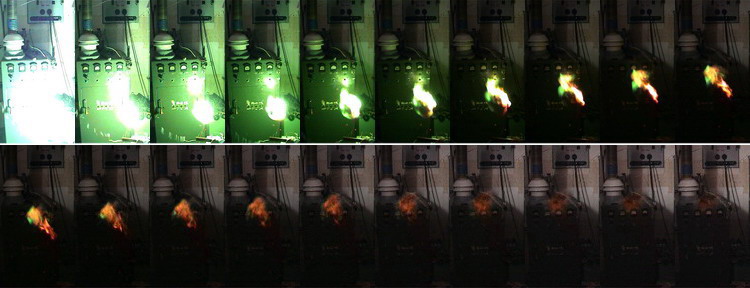
Fig. 3. Relaxation of the fireball created in the discharge between copper wire electrodes after introduction of a mix of natural gas with air into a zone of the discharge.
One can see in fig. 3 that already at the third frame after breaking-off of a current the attributes of loss of form stability are observed. The object obtains a view of a cloud, the luminescence becomes weak and its color - orange. To the end the luminosity strongly falls and the object is "blurred" in an atmosphere.
This experiment shows that products of the discharge are more suitable "fuel" for a dust-gas fireball than combustible gas like propane-butane. In terms of physics of nonideal plasma the shape instability, absence of sharp borders are explained by smallness of parameters of nonideality, one of which - the parameter of coulomb nonideality is proportional to a square of magnitude of a charge of aerosol particles, i.e. in the first case the particles has much greater charge than in the second one. What it depends from?
Role of the work function.
The very first circumstance limiting an opportunity of the charging is necessity of fulfilment of work function from a surface of an aerosol particle. In case of a contracted arc the ionization of particles is natural because of thermoemission, but after the breaking-off of a current when the gas temperature is much closer to the room one than to the arc discharge one, the maintenance of ionization demands the special reasons. There are two such reasons in the case of an aerosol: a foto- and chemoemision.
From the point of view of energy of electromagnetic quantums the photoeffect is threshold phenomenon: for an electron (ion) photoemission the quantums with energy equal or exceeding work function are necessary. For copper it is equal 4.4 eV (for cuprous protoxide 5.15 eV), for carbon 4.7 eV that corresponds to the ultra-violet band. Let's notice that at burning natural gas such radiation is very small. On the other hand, ultra-violet radiation of fireballs was fixed by Pirozerski A.L. at the research of Gatchina discharge [6] that testifies to presence in them rather vigorous radicalrecombinational acts. It is interesting also that in Gatchina discharge at significant excess of solution salinity in relation to optimum for formation of fireball the conducting of the discharge causes a charge of environmental isolated subjects up to distance of 1-2 m from an dischager including the experimenter.
Heterogeneous chemical reaction at a cold surface has an effect
similar to a photoeffect. For studying of the chemoemission in [8] the
molarization reaction of atomic hydrogen 4.5 eV is used.
The told does not mean that some quantums each of which separately is less than work function never can knock out electron as in some cases the step ionization is possible. The first quantum creates the excited state due to which work function becomes less for the second one. But it demands existence enough long-lived excited states and enough intensive quantum flow. Due to the multiquantum vibronic mechanism the nonequilibrium emission of the charged particles is possible [9]. However the quantum yield to one act of adsorption is rather low: 10-3 - 10-5 for electron, for ions it is two order less. Though in case of our fireballs it is necessary to mean not polycrystals but clusters and nanoparticles having the special properties in this plan [10], experiment apparently shows that when energy of radicals are lower than an aerosol work function the necessary degree of electrization is not attained.
Radiation of fireballs and of the discharge bearing them.
The erosive substance changes the appearance of the arc discharge. At the opening of electrodes the arc is strongly extended, the contraction disappears. Having been ejected by arc the substance forms as a rule single brightly glowing volume in which the part of the discharge is distributed more or less regularly (Fig. 2). General intensity of radiation grows in process of extension of an arc and accumulation of plasma and then falls with reduction of a current. The breaking-off of a current is accompanied by a not spasmodic reduction of radiation which further relaxes more and more smoothly up to some level, and then the area of a luminescence starts to converge up to disappearance (fig. 4).
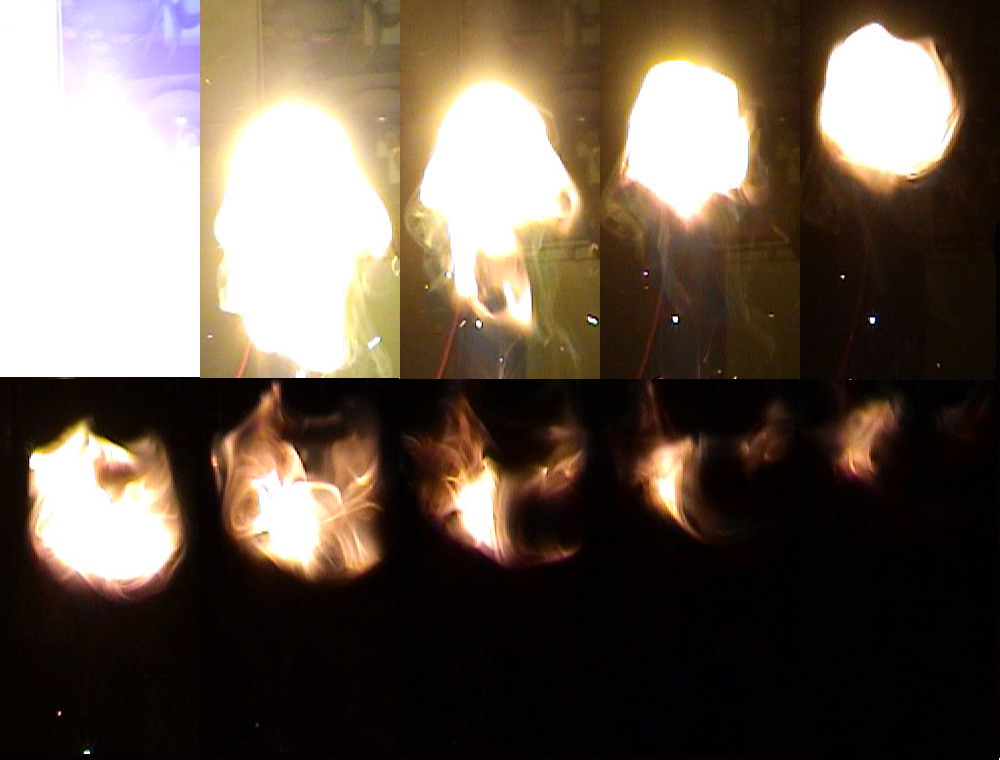
Fig. 4. Narrowing of a zone of a luminescence at a relaxation of the fireball created at the joining-opening of wire electrodes of carbon steel.
Radiation of fireballs falls basically at an optical band. As radiation has luminescent character the videoshooting of objects in different spectral bands allows to detach in it various processes and structural elements observing dynamics of their intensity and distribution.
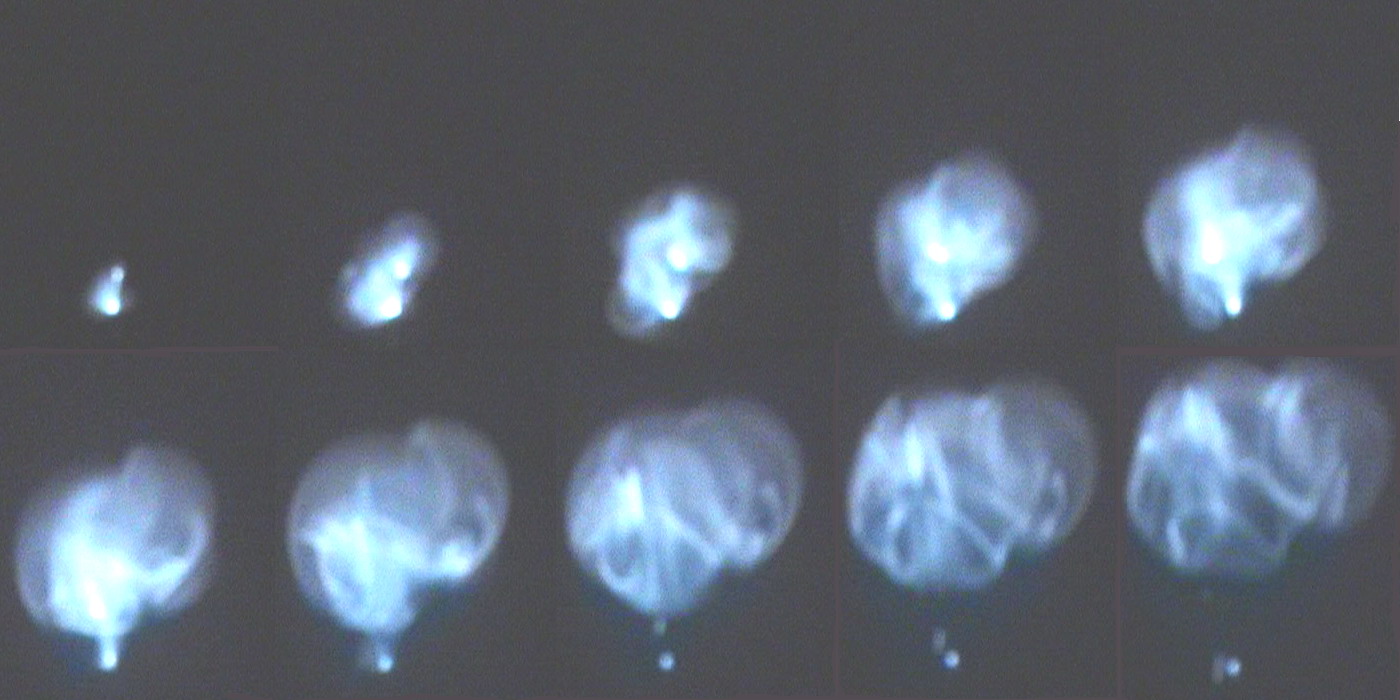
Fig. 5. Videoshooting in a near infra-red band of a fireball formation at the discharge with copper wire electrodes.
So, for example, images in a near infra-red band of the discharge with copper wire electrodes allow to separate the distribution of the largest dispersed particles of copper oxides (fig. 5) which aspire to concentrate at border of object (Fig.6).
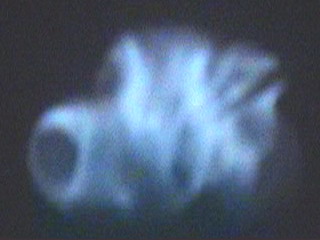
Fig. 6. Object of the "wrong" form as a part of torus allowing to imagine the distribution of big particles in cross section of a fireball. Conditions of the discharge and observation are similar fig. 5.
At the same time rather bright source of more short wave, ultra-violet radiation concentrates inside object (fig. 7).
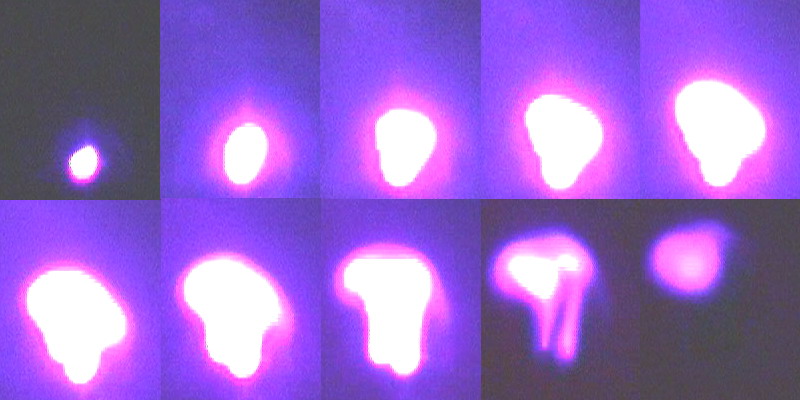
Fig. 7. Videoshooting of a fireball formation in a ultra-violet band 380-390 nm. Breaking-off of a current occurs at the eighth frame. Material of electrodes - carbon basic oxides of which are gaseous. The color consistently varied from black to blue then to lilac up to white corresponds only gradations of chemophosphorescence brightness.
Spectral characteristics of fireball radiation(0,3 MB).
References
Peterhof 27.12.2005.